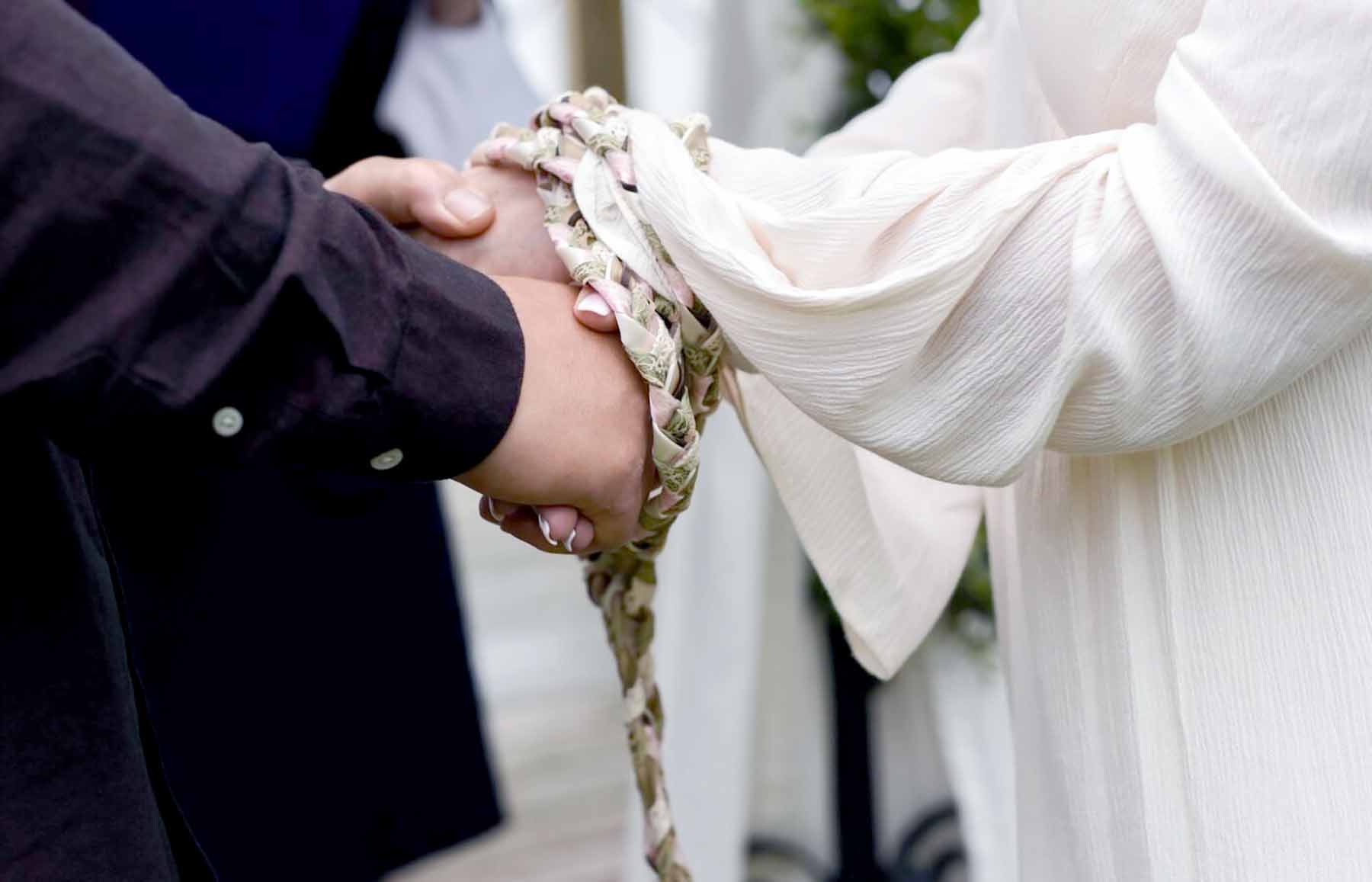HANDFASTING
An ancient wedding tradition
Handfasting ceremonies are an ancient wedding tradition embraced by many different cultures including the Celts, Pagans, Wiccans, Jews, Hindus and of course it is very prevalent in the Norse culture among others. It was practiced as a form of marriage or betrothal many centuries ago in England, Scotland, Ireland, Wales, the Isle of Man (island between England and Ireland in the Irish Sea) and, believe it or not, the region of Brittany in France as well (hence the name Brittany) as well as many other countries throughout the world.
Handfasting has re-emerged in current years with couples celebrating their various heritages in all parts of the world (and those without any particular relevant heritage) including right here in Ontario. Handfasting is often included as an important component in their wedding ceremony but also full handfasting ceremonies are sometimes requested by couples with Pagan and Wiccan beliefs which are often entered into without any legalities.
A Brief History of Handfasting CEREMONIES
We find the word “handfasting” actually referring to a kind of marriage or betrothal often in the British Isles but also in many other countries and in different forms throughout the world. A handfasting ceremony is an ancient marriage ritual made popular in Ireland and Scotland during the early Christian period but it has much earlier roots in other cultures and faiths including Paganism, Judaism and Hinduism. This symbolic joining together of the couple’s hands is the origin of the familiar expression, “tying the knot”. Handfasting, in essence, was also a form of contract between the couple.

Unlike “official” weddings which had some kind of officiant, and would be recorded solemnly by people whose job it was to record these things, handfasting was simply performed by a couple in front of a witness or two. It was generally no more complex than the couple joining hands (thus making “fast” their hands) and declaring themselves united. Sometimes signifying a betrothal, rather than a marriage or often a marriage between peasants where any other type of marriage was not possible, signifying a “common law” relationship. Indeed, in Scotland, handfasting was recognized as a legal marriage until 1939 when marriage laws were changed in that country.
With the advent of the church rather than the civil wedding, the term handfasting fell out of usage until the 1950s.
Today, a handfasting ceremony is a beautiful and unique way to represent your union and honour your heritage (or not). The ritual takes place during the ceremony, and certainly before the rings are exchanged for practical reasons.
Handfasting Alternatives for Different Beliefs
There are actually very many types of handfasting ceremonies for alternative belief systems where wording and certain components are different including Celtic, Pagan, Druidic, Grecian, Romany and Wiccan. All can be incorporated into a wedding or commitment ceremony, or simply a full handfasting ceremony. In addition significant guests and family members can be involved in the handfasting ceremony itself in a variety of ways.
Vows can be said by each of the bride and groom spontaneously or repeated after the celebrant/officiant. In addition, vows can be asked of the bride and groom, and/or appointed guests, each adding a different coloured cord or ribbon to the handfasting collection on the couple’s joined hands.
Instead, a braid can be made from different kinds of cloth or ribbon in different colours which are significant because of the meaning of that colour (or simply bridal party colours) and as each vow is asked by the celebrant, the long braid is wrapped one more time around the hands.
Celtic Handfasting CEREMONIES
For Scottish handfasting ceremonies (and sometimes ceremonies for their Irish and Welsh cousins), the cloth/ribbon used is made of tartan. A family tartan or two can be incorporated if in existence or an alternative tartan can be selected.
THE SCOTTISH REGISTER OF TARTANS
If you are interested in finding out if your family surname, country, Province, Regiment or other entity has its own registered tartan (often there are multiple), please follow this link below and conduct your own research: https://www.tartanregister.gov.uk/index
Alternatively, a custom made braid can be used with charms/beads on the end to match the wedding party colours or preferred colours for the couple.
Actually Tying the Knot
Different knots can be used depending upon the type of handfasting selected. The infinity knot is a symbolic knot which I often use after discussing this with my couples; another option is that the braid/cord can be tied three times with specific words spoken representing the significance of each knot. However, the possibilities for knotting the actual braid are endless!
HANDFASTING CEREMONY PRICING
Pricing for a full handfasting ceremony without legalities is $495. For combined wedding and handfasting ceremonies, a charge of $85 is added to the cost of your selected ceremony package. Our custom written forever ceremony can include a handfasting ceremony as your chosen special element. Pricing for wedding ceremony options can be accessed here: View wedding ceremony pricing


